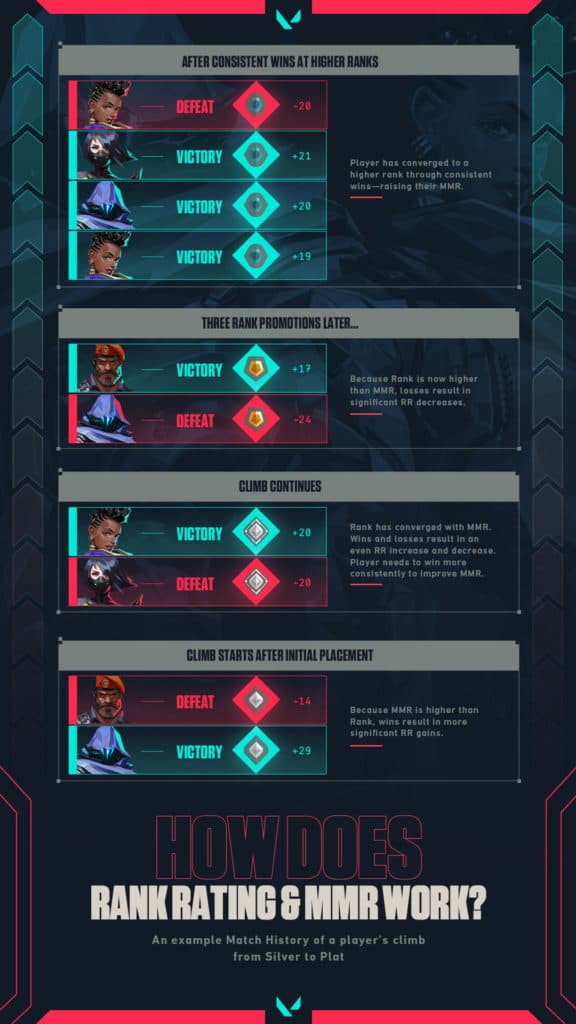Here’s the full explanation of how VALORANT’s Rank Rating and the hiden Matchmaking Rating work, according to Riot Games.
Riot Games went in-depth on VALORANT’s Rank Rating system in the latest Ask VALORANT blog. The game’s rank rating system has been a hot topic of discussion in the community for the past few weeks. Riot Games’ blog hopes to provide a better understanding of the Rank Rating and the hidden Matchmaking rating.
What is the difference between Rank Rating and MMR?

Rank Rating is the number visible to players and reflects the official rank in-game. The matchmaking rating is a hidden number that is key in matching different players together for matchmaking.
A player will never see his MMR, which, Riot says, is like a giant ladder. A win helps players climb up while a loss pushes them down in this ladder. No two players can tie or take the same spot on the matchmaking ladder.
How does Rank Rating interact with MMR?

After every episode reset, the system uses the hidden MMR for a rough estimate of a player’s skill level. The system places the player on the lower end. A player earns more RR based on his wins and loses some based on the number of losses.
Eventually, your Rank will converge very close to your MMR (unless of course, you begin to lose, then your MMR will begin to drop). When this happens you will get a relatively even amount of RR per win/loss. Now that you’ve reached your MMR, you’ll need to improve in skill and win against your opponents more than you lose in order to climb above our original estimates. When you are at your MMR, we’ve most often seen you with a 50% win rate. Even with a 50% win rate, you could go on a long win streak and promote to a rank above your MMR.
The player earns more RR per win and loses less RR per loss. This helps the system in achieving convergence, wherein the RR and the MMR are within a smaller range.
- If your MMR is higher than your rank, you’ll gain more RR on wins than you lose on losses.
- In case your MMR is even with your rank, you’ll gain and lose closer amounts of RR for wins and losses.
- If your MMR is lower than your rank, you’ll gain less RR on wins and lose more on losses.
Related articles
How is VALORANT’s MMR similar to Dota 2?
VALORANT’s Mathcmaking Rating explained in the Ask VALORANT blog is very similar to that of other games. Most notably, Valve’s Dota 2 uses the MMR system to correctly estimate a player’s skill and thereby his rank.
The matchmaking rank is essential in ensuring a fair balance of skill levels in a game. With ten players on the server, it is essential to ensure a balance of skill and performance between both teams. The system uses the average matchmaking rank to achieve this balance.
Riot Games also says it is inherently difficult to climb ranks over the players ranked above you.
So, if you are winning slightly over half your games and have 200 wins, but another player is winning the vast majority of their games but only has 100 wins, that player with 100 wins will likely sit higher on the leaderboard because of their MMR.
This feature helps in ensuring competitive integrity. It does not reward players who would simply grind more than those ranked above them. The VCT regional Masters is currently underway with the top European teams competing against each other online.